
A political cartoon, also known as an editorial cartoon, is a cartoon graphic with caricatures of public figures, expressing the artist's opinion. An artist who writes and draws such images is known as an editorial cartoonist. They typically combine artistic skill, hyperbole and satire in order to either question authority or draw attention to corruption, political violence and other social ills.
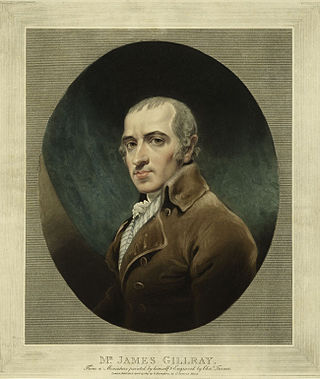
James Gillray was a British caricaturist and printmaker famous for his etched political and social satires, mainly published between 1792 and 1810. Many of his works are held at the National Portrait Gallery in London.

Thomas Rowlandson was an English artist and caricaturist of the Georgian Era, noted for his political satire and social observation. A prolific artist and printmaker, Rowlandson produced both individual social and political satires, as well as a large number of illustrations for novels, humorous books, and topographical works. Like other caricaturists of his age such as James Gillray, his caricatures are often robust or bawdy. Rowlandson also produced highly explicit erotica for a private clientele; this was never published publicly at the time and is now only found in a small number of collections. His caricatures included those of people in power such as the Duchess of Devonshire, William Pitt the Younger and Napoleon Bonaparte.

Political satire is satire that specializes in gaining entertainment from politics; it has also been used with subversive intent where political speech and dissent are forbidden by a regime, as a method of advancing political arguments where such arguments are expressly forbidden.

Simplicissimus was a satirical German weekly magazine, headquartered in Munich, and founded by Albert Langen in April 1896. It continued publishing until 1967, interrupted by a hiatus from 1944–1954, and became a biweekly in 1964. It took its name from the protagonist of Grimmelshausen's 1668 novel Der Abenteuerliche Simplicissimus Teutsch.
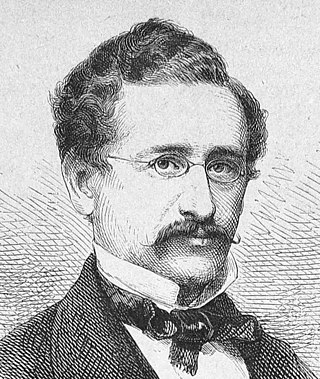
David Kalisch was a German playwright and humorist.
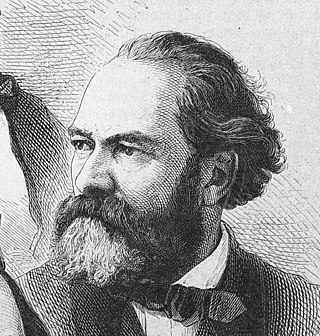
Rudolf Löwenstein was a German author.
Ann Taylor Allen is a professor of German history at the University of Louisville. Allen is the author of four books and more than twenty articles/reviews in peer-reviewed journals. She has a BA from Bryn Mawr College, studied at the University of Hamburg, Germany with a Fulbright Fellowship, received an MA in 1967 from Harvard University and earned a PhD from Columbia University in 1974.
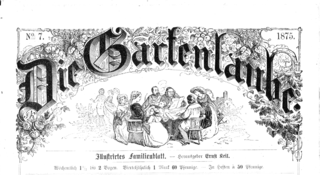
Die Gartenlaube – Illustriertes Familienblatt was the first successful mass-circulation German newspaper and a forerunner of all modern magazines. It was founded by publisher Ernst Keil and editor Ferdinand Stolle in Leipzig, Kingdom of Saxony in 1853. Their objective was to reach and enlighten the whole family, especially in the German middle classes, with a mixture of current events, essays on the natural sciences, biographical sketches, short stories, poetry, and full-page illustrations.
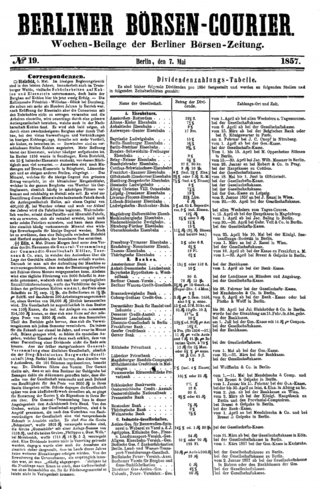
The Berliner Börsen-Courier was a German left-liberal daily newspaper published from 1868 to 1933. It focused primarily on prices of securities traded on the stock exchanges and securities information about the mortgage market, but also featured news and reports from industry, commerce, politics and culture. It was subtitled: moderne Tageszeitung für alle Gebiete.

Constantin de Grimm also known as Baron de Grimm, was a Russian illustrator known internationally for his caricatures in publications such as the Vanity Fair, Kladderadatsch (Germany), The Evening Telegram (US), and the German edition of Puck, of which he was founder. He served multiple times as president of the German Press Club. Born at the Winter Palace in Saint Petersburg, where his father taught the children of Czar Nicholas I, he relocated to Berlin in 1860, and later to Leipzig, where he contributed drawings to Daheim. He served in the German Army from 1867 to 1873 and received the Iron Cross for bravery during the Franco-Prussian War. He then returned to cartooning, becoming assistant editor of Kladderadatsch in 1873, founding the German edition of Puck in 1874, and – after a year of art instruction at École des Beaux-Arts in Paris – became a journalist and drama critic. He went to the United States in 1884 after attracting the notice of James Gordon Bennett, publisher of the New York Herald, and became known to American readers through art in the Herald and Evening Telegram. He died in New York City in 1896 at the age of 50.
pardon was a German satirical magazine, which appeared biweekly from 1962 to 1982. It was published to criticise the conservative situation of the Adenauer era.
Il Travaso delle idee, mostly known as Il Travaso, was a satirical magazine which was in circulation between 1900 and 1966 with an interruption in the period 1944–1946. Its subtitle was Organo ufficiale delle persone intelligenti. The magazine was headquartered in Rome, Italy.

Novyi Satirikon was a Russian language weekly humor and satirical magazine that was published in Saint Petersburg in the period 1908–1914. During the 1917 Revolution, the magazine held an anti-Bolshevik political stance, and most of its contributors had to flee Russia after the magazine was closed in 1918.

Abu Naddara was an Arabic political satire magazine based in Cairo, Egypt, and then in Paris, France. Its title, Abu Naddara, was the pseudonym of the founder, Yaqub Sanu. The magazine was the first Arabic publication which employed cartoons to express social and political criticism. It existed in the period 1877–1910.
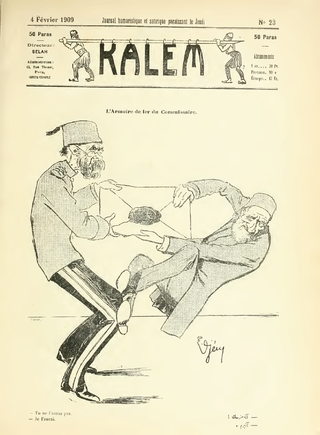
Kalem was a bilingual weekly political satire magazine which was in circulation in the period 1908–1911 in Istanbul, Ottoman Empire. The magazine was one of the satirical publications which were started immediately after the end of Ottoman Sultan Abdulhamid's strict rule. It was published in Turkish and French languages and was one of the most notable satirical magazines in the Empire in terms of the quality cartoons. In addition, it is the first Ottoman publication which employed the word cartoon and attempted to develop a definition for it.
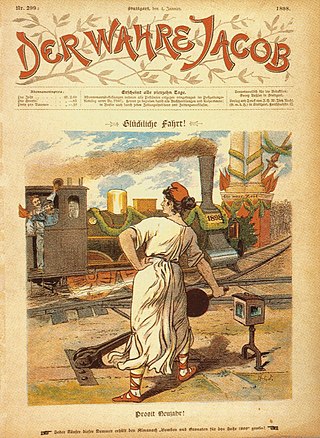
Der Wahre Jacob was a biweekly satirical magazine which had a social democratic political stance and was an organ of the Social Democratic Party (SPD). It was in circulation between 1879 and 1933 and based first in Hamburg, and in Stuttgart in German Empire.
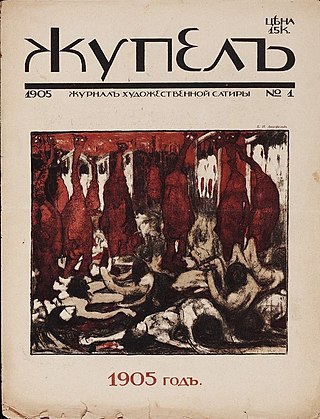
Zhupel was a Russian satirical magazine, founded by Zinovii Grzhebin in 1905. Among the contributors were the most famous Russian writers and artists of the time. Despite the success, like many other Russian satirical magazines, it was closed by the Tsarist government after publishing three issues, while Grzhebin was imprisoned. In 1906, the creators tried to revive the journal under the name Hell's Mail, but it was also closed after three issues.

Die Brennessel was a weekly satirical magazine which was published in Munich, Germany, between 1931 and 1938. It was one of the publications which were established to gain popularity among Germans in favor of the Nazi Party. The magazine employed humor as a tool for Nazi propaganda.
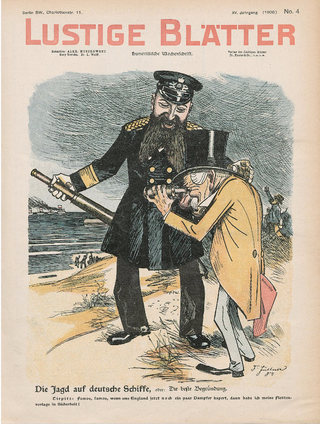
Lustige Blätter was a satirical magazine published between 1885 and 1944 in Berlin. Its subtitle was schönstes buntes Witzblatt Deutschlands.

















